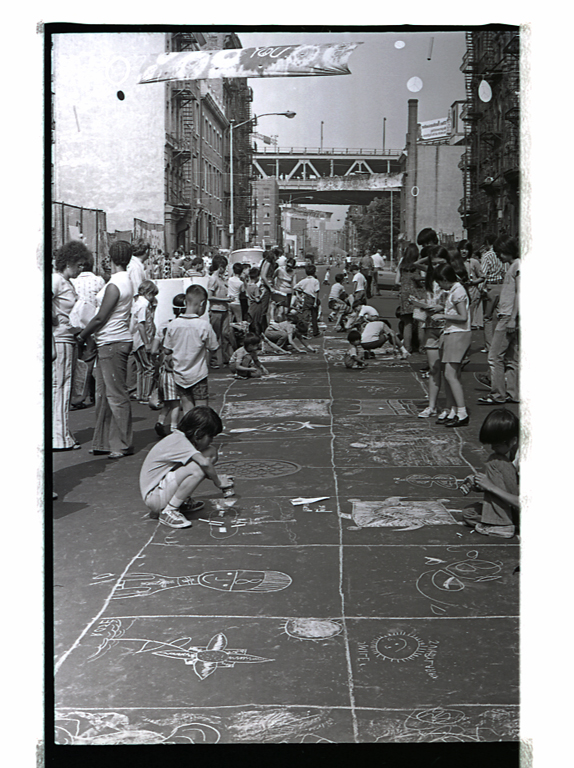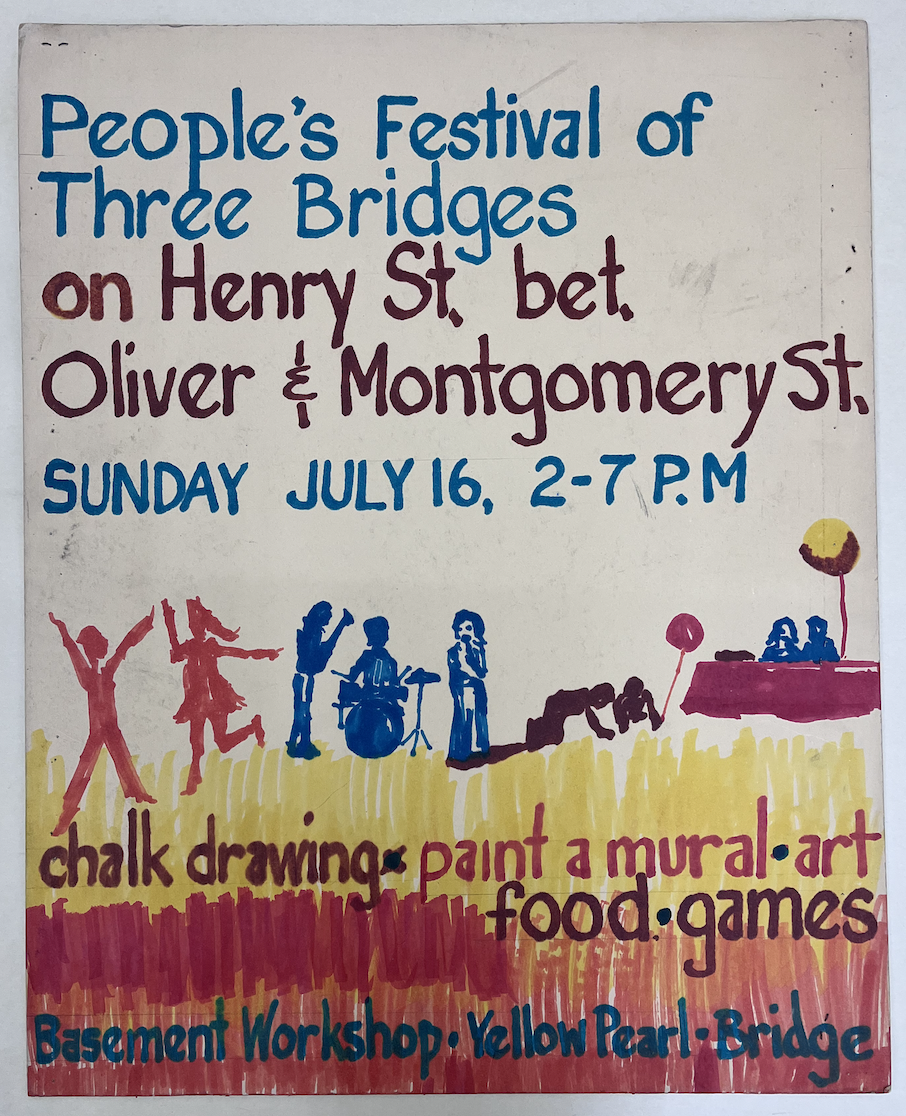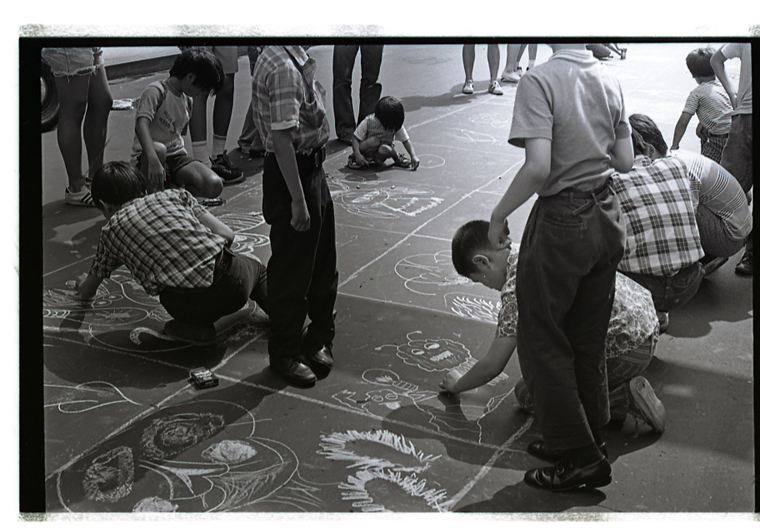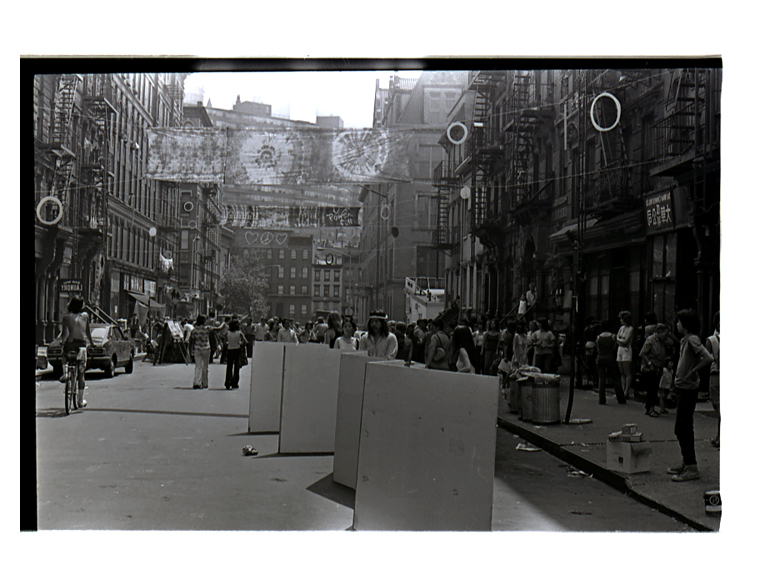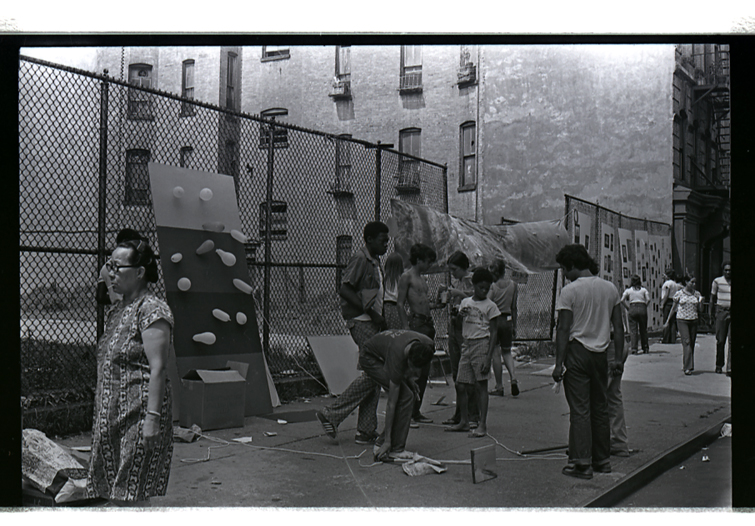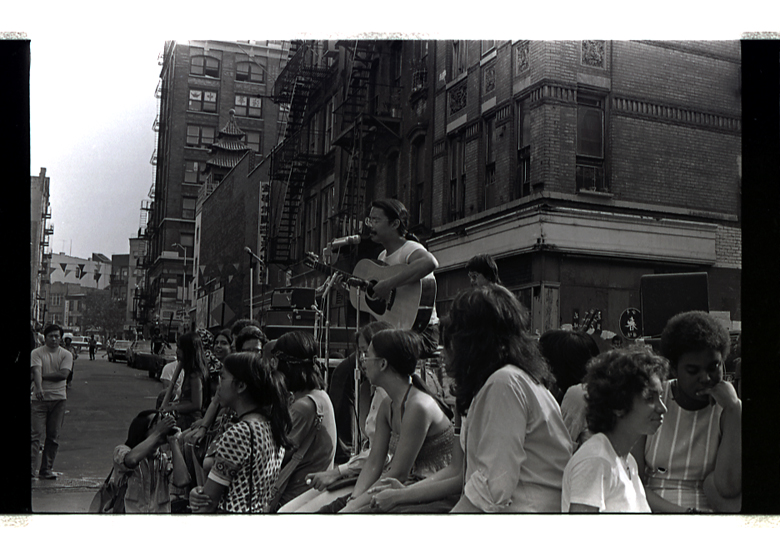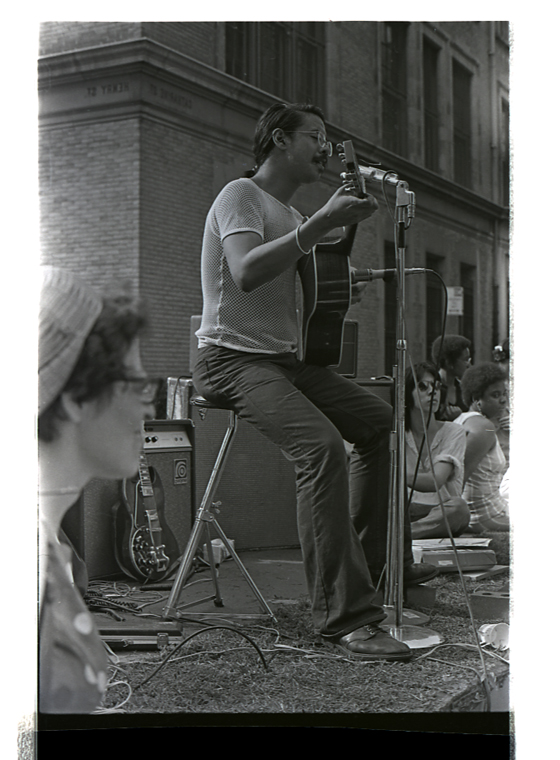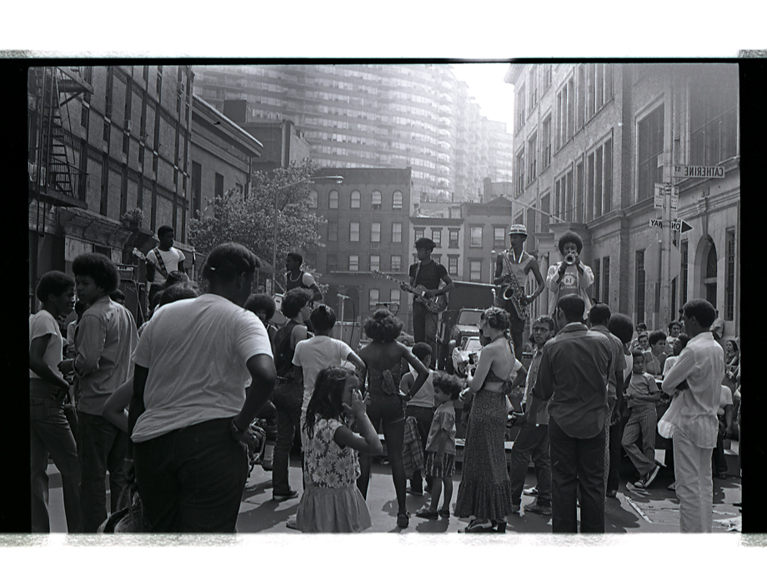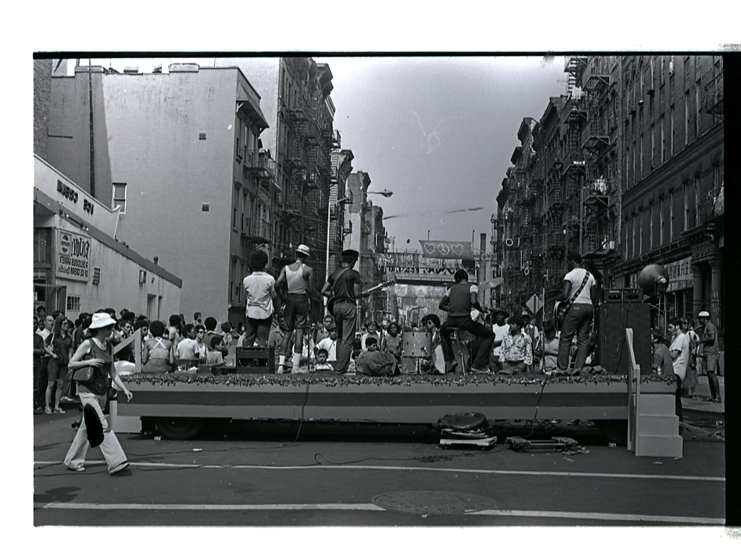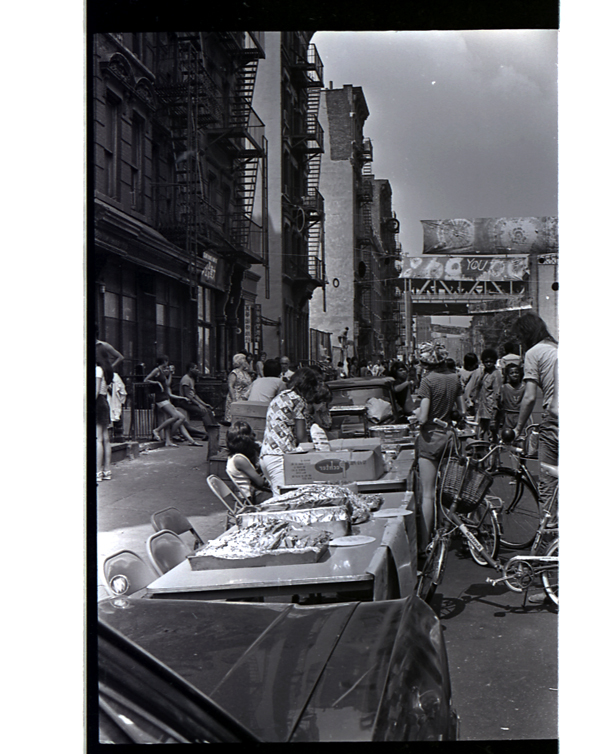Not much information accompany these photographic negatives but they likely capture a “People’s Festival of Three Bridges” organized in July of 1972 by the Basement Workshop, a group of young political and arts activists who launched the Asian American Movement in New York. These summer neighborhood block parties on Henry Street near the Two Bridges area of Manhattan Chinatown drew young and old, and brought together members of the community in a range of activities, from chalk drawing and mural painting to enjoying outdoor concerts and street food.
It is difficult to discern from the black and white photography, but the poster, advertising a similar festival held at a later year, helps us imagine the vibrant colors that people would have seen. Bright tie-dye banners hung over streets broadcasting affirming messages such as “U R Power-full” to the community below. People looking down could watch children doodling colorful chalk drawings on Henry Street’s blacktop, an activity giving creative outlet to youth in a neighborhood at the time rife with street gangs. The songs of Charlie Chin, Joanne Nobuko Miyamoto, and Chris Iijima —who produced the first album of recognizably Asian American music, A Grain of Sand—would have filled the air, along with music by Black and Latino artists from whom the trio often drew inspiration and with whom they built solidarity.
